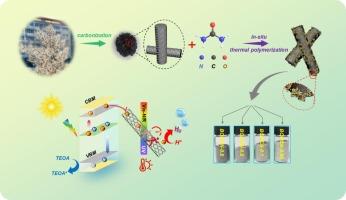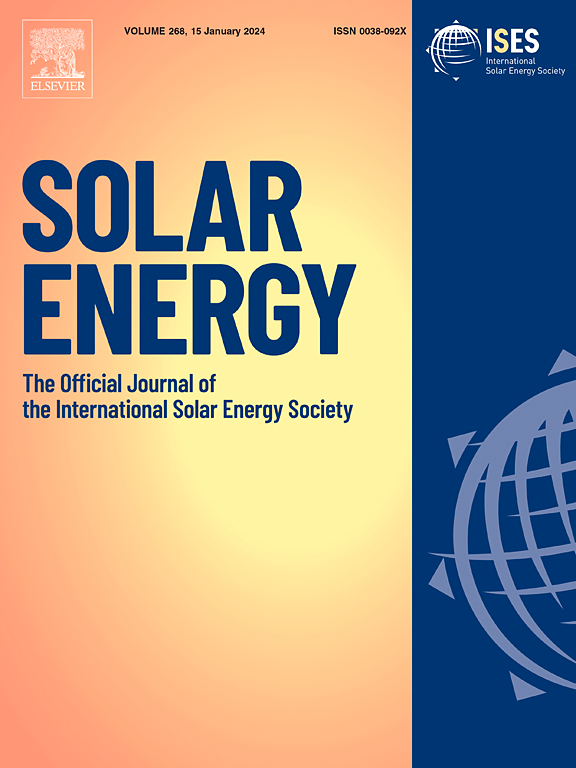In situ composite of biomass derived carbon/porous carbon nitride and its enhanced performance in solar-driven photocatalytic hydrogen evolution reaction
IF 6
2区 工程技术
Q2 ENERGY & FUELS
引用次数: 0
Abstract
Converting waste organic biomass into functional carbon materials is regarded as a sustainable development strategy to address environmental pollution and energy crisis. In this work, carbon/porous carbon nitride (PCN) composite photothermal catalysts were prepared via an in-situ method with urea and phragmites spikelets as raw materials for the solar-driven hydrogen evolution reaction (HER). The biomass derived porous carbon, in close contact with PCN, not only acts as a charge transfer bridge facilitating the rapid separation and migration of photogenerated charges but also serves as a photothermal carrier to enhance the kinetic process of the photocatalytic reaction. Under simulated solar irradiation (AM 1.5 G), the optimal HER rate of the composite catalyst is 4.98 mmol g−1h−1, which is 2.1 times that of pure PCN. The physicochemical properties of the materials, including morphology, crystal structure, elemental composition and state, and energy band characteristics, were determined. Additionally, theoretical calculations were employed to explore the impact of biomass-derived porous carbon on the electronic structure and band structure of carbon nitride. This work not only broadens the range of raw materials for biomass-derived porous carbon but also provides a novel strategy for promoting photocatalytic HER through synergistic multifield effects, showing broad application prospects in the field of resource recovery and green catalysis.

生物质衍生碳/多孔氮化碳原位复合材料及其在太阳能驱动的光催化氢进化反应中的增强性能
将废弃有机生物质转化为功能性碳材料被认为是解决环境污染和能源危机的可持续发展战略。本研究以尿素和葭穗为原料,通过原位法制备了碳/多孔氮化碳(PCN)复合光热催化剂,用于太阳能驱动的氢进化反应(HER)。生物质衍生的多孔碳与 PCN 紧密接触,不仅可作为电荷转移桥,促进光生电荷的快速分离和迁移,还可作为光热载体,增强光催化反应的动力学过程。在模拟太阳辐照(AM 1.5 G)条件下,复合催化剂的最佳 HER 率为 4.98 mmol g-1h-1,是纯 PCN 的 2.1 倍。研究人员测定了材料的物理化学特性,包括形态、晶体结构、元素组成和状态以及能带特性。此外,还利用理论计算探讨了生物质衍生多孔碳对氮化碳电子结构和能带结构的影响。这项工作不仅拓宽了生物质衍生多孔碳的原材料范围,而且通过多场协同效应为促进光催化 HER 提供了一种新的策略,在资源回收和绿色催化领域展示了广阔的应用前景。
本文章由计算机程序翻译,如有差异,请以英文原文为准。
求助全文
约1分钟内获得全文
求助全文
来源期刊

Solar Energy
工程技术-能源与燃料
CiteScore
13.90
自引率
9.00%
发文量
0
审稿时长
47 days
期刊介绍:
Solar Energy welcomes manuscripts presenting information not previously published in journals on any aspect of solar energy research, development, application, measurement or policy. The term "solar energy" in this context includes the indirect uses such as wind energy and biomass
文献相关原料
公司名称
产品信息
阿拉丁
Nafion perfluorinated resin solution
阿拉丁
Chloroplatinic acid hydrate
 求助内容:
求助内容: 应助结果提醒方式:
应助结果提醒方式:


